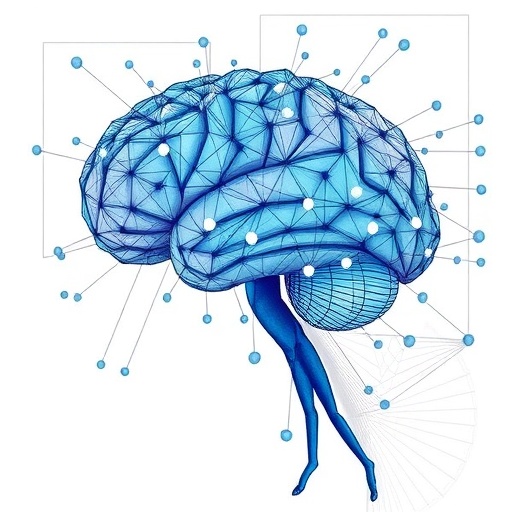In a groundbreaking development that pushes the frontiers of neuroscience and artificial intelligence, researchers have successfully demonstrated a novel method of speech decoding by leveraging transfer learning on distributed brain recordings. This innovative approach, detailed in a recent Nature Communications paper, outlines how brain-computer interfaces (BCIs) can achieve unprecedented reliability in translating neural activity into coherent speech. Such a leap not only deepens our understanding of brain function but also heralds transformative prospects for communication technologies, especially for individuals suffering from speech impairments due to neurological conditions.
The central challenge in brain-machine interfacing for speech decoding has historically been the vast variability in neural signals across different individuals and even disparate brain regions. Traditional models required intensive, patient-specific training, which limits scalability and practical application. The team led by Singh, Thomas, and Li tackled this obstacle by developing a transfer learning framework that utilizes distributed brain recordings from multiple sources. Their approach effectively harnesses previously acquired neural data to improve the performance of speech decoding systems across new users without exhaustive retraining.
The methodology revolves around aggregating and synchronizing neural signals from several brain regions implicated in speech production and comprehension. Using intricate electrophysiological recordings obtained through intracranial electrode arrays, researchers captured real-time neural activity in subjects engaged in spoken language tasks. Unlike prior methods that rely heavily on localized brain area data, this study integrates distributed signals, creating a holistic neural representation of speech processes. This multi-regional data proved critical for training robust machine learning models capable of capturing subtle patterns across the brain’s speech networks.
One of the technical cornerstones of the study is the application of deep learning architectures optimized with transfer learning algorithms. Transfer learning enables models trained on large datasets from one task or domain to be fine-tuned quickly on a different but related task, saving both data and computational resources. Here, models trained on neural recordings from initial groups of participants were adapted to new individuals with minimal additional data. This approach demonstrated a remarkable ability to generalize speech decoding performance across subjects, a feat that had long eluded neuroscientific AI research.
Crucially, the research team employed cutting-edge signal preprocessing techniques to improve the quality and consistency of the electrophysiological data fed into the models. Complex filtering algorithms and noise-reduction methods standardized neural recordings, reducing artifacts and enhancing signal-to-noise ratios. This preprocessing step ensured that the transfer learning algorithms received high-fidelity inputs, which was essential for maintaining decoding accuracy when generalizing across different brain architectures and recording conditions.
Results from the study reveal that the transfer learning-enabled speech decoding system outperforms traditional patient-specific models by a significant margin. The system successfully decoded a wide variety of spoken words and phrases from neural signals with high precision and reliability, performing robustly despite inter-subject variability. Notably, it achieved these results with less training data required for new individuals, paving the way for more accessible brain-computer communication devices for diverse user populations.
Beyond the pure technical achievements, this research carries profound implications for clinical applications. For patients suffering from conditions such as amyotrophic lateral sclerosis (ALS), stroke, or traumatic brain injury—who may lose the ability to communicate verbally—such advancements could restore their capacity to interact with the world. The transfer learning framework drastically reduces the calibration time needed for individualized neural speech decoders, accelerating the deployment of personalized assistive technologies and increasing their usability in everyday settings.
The study also sparks a new wave of inquiry into the neural encoding of speech. By demonstrating a reliable decoding pipeline that integrates signals from multiple distributed brain regions, it affirms the complex, distributed nature of speech motor control and auditory processing. This integrative understanding challenges narrower models that previously isolated language function to discrete brain areas and emphasizes the dynamism of neural networks engaged during speech.
Moreover, the researchers explored the scalability potential of their methodology using larger datasets and more comprehensive neural sampling methods. The distributed recording approach, supported by transfer learning paradigms, promises to keep pace with ongoing advances in neural recording hardware, including high-density electrode arrays and non-invasive imaging technologies. As these tools evolve, so too will the fidelity and scope of speech decoding systems, opening new horizons for human-computer interactions enhanced by neurotechnology.
Ethical considerations also come into focus with this type of research. The prospect of translating brain activity into speech carries significant privacy and security implications. The authors underscore the importance of stringent data protection measures and transparent consent processes when using such technology in medical or consumer contexts. Societal discussions about the ethical deployment of neural decoding devices must parallel technological advances to ensure these tools serve humanity responsibly and equitably.
Looking ahead, the integration of transfer learning with distributed brain recordings may extend to other forms of communication beyond speech, including sign language, imagined language, or even more abstract cognitive states. This could revolutionize assistive technology paradigms across a spectrum of neurological and motor disorders, offering new pathways to restore autonomy and enrich human experience.
In tandem with this technological horizon lies the challenge of integrating decoded speech output into naturalistic communication platforms. Future research needs to address how decoded neural signals can be seamlessly transformed into fluid, contextually appropriate language, ideally interfacing with AI-driven language models to enhance expressiveness and conversational flow.
The research presented by Singh and colleagues marks a pivotal milestone, forging a powerful link between cutting-edge AI methodologies and the nuanced complexity of the human brain. Their innovative transfer learning approach, empowered by distributed neural recordings, chart a promising trajectory for speech decoding technologies that is both scientifically profound and laden with humanitarian promise.
As neural interface technologies become increasingly sophisticated and accessible, this study heralds a future where the barriers between thought and expression are dramatically diminished. The ability to reliably decode speech from brain activity using minimal individual training will catalyze a new generation of communication aids, transforming lives and expanding the boundaries of human-machine symbiosis.
This pioneering work also exemplifies the profound synergy achievable at the intersection of neuroscience, machine learning, and clinical medicine. Continued interdisciplinary collaboration will be vital to translate such discoveries from laboratory settings into real-world applications that deliver tangible benefits on a global scale.
In the realm of neurotechnology, the advent of transfer learning-enabled speech decoding is a watershed. It redefines what is possible, not just for brain-computer interfacing but for the fundamental understanding of how distributed neural circuits orchestrate one of humanity’s most complex cognitive functions: language.
As this research inspires new waves of innovation, it simultaneously invites ongoing reflection on the societal and ethical dimensions of technology that can read minds and speak for us. Navigating this futuristic landscape with foresight and care will determine how these scientific breakthroughs reshape human communication in the decades to come.
Subject of Research: Speech decoding using transfer learning on distributed brain recordings
Article Title: Transfer learning via distributed brain recordings enables reliable speech decoding
Article References:
Singh, A., Thomas, T., Li, J. et al. Transfer learning via distributed brain recordings enables reliable speech decoding. Nat Commun 16, 8749 (2025). https://doi.org/10.1038/s41467-025-63825-0
Image Credits: AI Generated
Tags: advancements in neuroscience and AIbrain-computer interfacescommunication technologies for speech impairmentsdistributed brain recordingselectrophysiological recordingsinnovative speech decoding methodsintracranial electrode arraysneural signal variabilityscalable brain-machine interfacingspeech decoding accuracytransfer learning in neurosciencetransforming communication for neurological conditions





